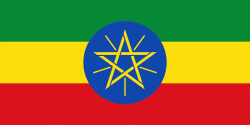Mehakelegnaw Zone (Central Tigray Zone)
Based on the 2007 Census conducted by the Central Statistical Agency of Ethiopia (CSA), this Zone has a total population of 1,245,824, of whom 613,797 are men and 632,027 women; 176,453 or 14.16% are urban inhabitants. The largest ethnic group reported in the Central Zone was the Tigrayan (99.37%); all other ethnic groups made up 0.63% of the population. Tigrinya is spoken as a first language by 99.4; the remaining 0.6% spoke all other primary languages reported. 97.82% of the population said they were Orthodox Christians, and 2.07% were Muslim.
The 1994 national census reported a total population for the zone of 943,850, of whom 464,633 were men and 479,217 women; 91,058 or 9.6% of its population were urban dwellers. The Zone is predominantly Tigrayan, at 99.6% of the population, while 0.11% were Agaw, 0.096% Amhara, and all other ethnic groups 0.12%. Tigrinya was spoken as a first language by 99.67% of the inhabitants. 98.41% of the population said they were Orthodox Christians, and 1.55% were Muslim. Concerning education in the Zone, 9.64% of the population were considered literate; 10.62% of children aged 7–12 were in primary school, while a negligible number of the children aged 13–14 were in junior secondary school, and 0.14% of children aged 15–18 were in senior secondary school. Concerning sanitary conditions, about 25% of the urban and 5.6% of all houses had access to safe drinking water at the time of the census; about 2.5% of the urban and 6% of the total had toilet facilities.
According to a May 24, 2004 World Bank memorandum, 13% of the inhabitants of the Central Zone have access to electricity, this zone has a road density of 29.0 kilometers per 1000 square kilometers, the average rural household has 0.8 hectare of land (compared to the national average of 1.01 hectare of land and a regional average of 0.51) and the equivalent of 0.8 heads of livestock. 17% of the population is in non-farm related jobs, compared to the national average of 25% and a regional average of 28%. 74% of all eligible children are enrolled in primary school, and 28% in secondary schools. 78% of the zone is exposed to malaria, and none to Tsetse fly. The memorandum gave this zone a drought risk rating of 616.
Map - Mehakelegnaw Zone (Central Tigray Zone)
Map
Country - Ethiopia
 |
 |
| Flag of Ethiopia | |
Anatomically modern humans emerged from modern-day Ethiopia and set out to the Near East and elsewhere in the Middle Paleolithic period. Southwestern Ethiopia has been proposed as a possible homeland of the Afroasiatic language family. In 980 BCE, the Kingdom of D'mt extended its realm over Eritrea and the northern region of Ethiopia, while the Kingdom of Aksum maintained a unified civilization in the region for 900 years. Christianity was embraced by the kingdom in 330, and Islam arrived by the first Hijra in 615. After the collapse of Aksum in 960, a variety of kingdoms, largely tribal confederations, existed in the land of Ethiopia. The Zagwe dynasty ruled the north-central parts until being overthrown by Yekuno Amlak in 1270, inaugurating the Ethiopian Empire and the Solomonic dynasty, claimed descent from the biblical Solomon and Queen of Sheba under their son Menelik I. By the 14th century, the empire grew in prestige through territorial expansion and fighting against adjacent territories; most notably, the Ethiopian–Adal War (1529–1543) contributed to fragmentation of the empire, which ultimately fell under a decentralization known as Zemene Mesafint in the mid-18th century. Emperor Tewodros II ended Zemene Mesafint at the beginning of his reign in 1855, marking the reunification and modernization of Ethiopia.
Currency / Language
| ISO | Currency | Symbol | Significant figures |
|---|---|---|---|
| ETB | Ethiopian birr | Br | 2 |
| ISO | Language |
|---|---|
| AM | Amharic language |
| EN | English language |
| OM | Oromo language |
| SO | Somali language |
| TI | Tigrinya language |















